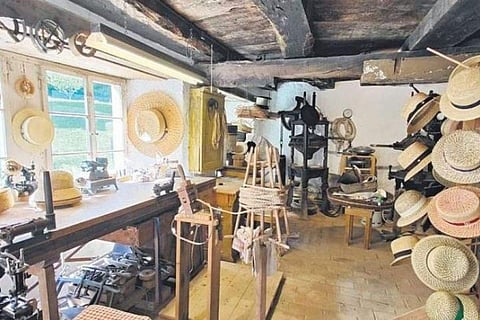
- LIFESTYLE
- FASHION
- FOOD
- ENTERTAINMENT
- EVENTS
- CULTURE
- VIDEOS
- WEB STORIES
- GALLERIES
- GADGETS
- CAR & BIKE
- SOCIETY
- TRAVEL
- NORTH EAST
- INDULGE CONNECT

Where did old farmhouses, stables, bakehouses or barns in Switzerland, which were replaced by modern buildings, go? They were dismantled and rebuilt at the Ballenberg Swiss Open-Air Museum. Spread over an area of 66 hectares, it’s a place where you will find heritage houses, rural handicrafts (think hand-carved wooden artefacts, hand-embroidered tablecloths, ceramics etc.), hay lofts, cellars and more. It is located about 20 minutes from the Brienz town centre.
These buildings, which were on the verge of demolition as a result of the construction boom that hit in the 1960s, showcase the different regional styles of each of the cantons of Switzerland. While the oldest edifice dates back to 1336, the newest belongs to 1900. The museum had 16 buildings when it first opened in 1978 and today houses close to 110.
The structures document distinct architectural features like widely projecting roofs, richly decorated facades and wooden balconies, and provide insights into the styles, materials, climate and economic considerations of different regions of Switzerland.
One can find houses from Jura, Central Midlands, Bernese Midlands, Valais, Bernese Oberland and Alpine regions. From the cisterns of the Middle Ages that were used to store water to the 17th-century farmhouses that had the ‘stock’ (a masonry store room attached to the kitchen) and roofs thatched with straw and the 18th-century Swiss chalets that originated as simple shelters in mountain pastures, Ballenberg has it all.
Each of the houses is filled with furniture, paintings, kitchenware and other artefacts that give visitors a sneak peek into the tangible and intangible culture of rustic Swiss life. Some of the buildings house traditional Swiss dresses like the men’s lederhosen (knee-length trousers) with suspenders and straw hats and women’s dirndl (a full-length skirt and a tight sleeveless top accompanied by brightly coloured socks or tights), festive costumes like the red canvas jackets of men and the silk aprons of women and musical instruments like the alphorn, bagpipe and fife.
Other houses showcase the tools of the yesteryears like those related to agriculture and also ones related to hat making, shingle cutting and carpentry.
Apart from the houses and their displays, there is a petting zoo, a forest trail, a medicinal garden and more. Visitors can also attend several live sessions and demos on bread-making, bobbin-lacemaking, basket-weaving, saddlery, crocheting, wood-carving, sawing, cheese-making and the like.
The museum also hosts special performances on specific days like rendition of Alpine music using the good old alphorn and exclusive exhibitions like those related to the Swiss tradition of wrestling. The museum is open from April to October each year and it is recommended to book your tickets online in advance.